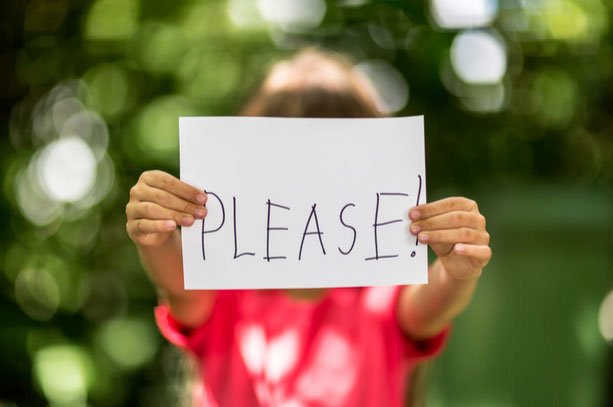 As a parent, you want your children to grow up with good manners, being polite wherever they go. Of course, sometimes this seems easier said than done, but at ABC Learning Center, we are here to help you accomplish that goal. Like you, we know that teaching children good manners early on means a lifetime of politeness and good manners as they get older.
As a parent, you want your children to grow up with good manners, being polite wherever they go. Of course, sometimes this seems easier said than done, but at ABC Learning Center, we are here to help you accomplish that goal. Like you, we know that teaching children good manners early on means a lifetime of politeness and good manners as they get older.
Good manners are simply good habits, improved by repetition and practice, and encouraged with praise. Here are some helpful tips on teaching good manners to your children at three developmental stages – toddler, preschool, and kindergarten.
Toddlers
Toddlers should be taught the difference between good behavior and bad behavior. At 18 months old, toddlers notice how those around them behave, so modeling good behavior is key in teaching your children manners. Start with staying seated while eating. Toddlers are notorious grazers but teaching them to stay seating until they have finished their snack or meal, just like the older kids and grown-ups at the table. Teaching basic communication like hello, goodbye, please, and thank-you are good mannered lessons toddlers can learn. Even if your toddler isn’t talking just yet, he or she can learn to wave hello and goodbye. Saying please and thank-you is an important lesson to teach early. Your little one may not understand the concept fully at first, but understanding will come as the habit of saying please and thank you is practiced. Again, if your toddler isn’t talking, learning to sign please and thank you gives them a way to build on the habit as they learn to speak the words.
Preschoolers
Preschoolers are often eager to learn, particularly if they feel they are learning skills that will help them be “big boys” and “big girls.” Preschool age is the perfect time to build on the good manner skills they learned as toddlers. At the table, your preschoolers should be sitting during the meal just like the rest of the family who has gathered for the meal. Now is the time to teach that “big kids” use forks and spoons to eat, not their fingers, a long with the use of a napkin. Preschoolers should be taught not talk with a mouthful of food and not to chew with his or her mouth open. You can reinforce table manners at a playtime tea party or picnicking at the park.
Preschoolers vocabulary is growing rapidly at this age and you can expand on the greetings they learned as toddlers along with “please” and “thank-you.” Teach your children to add phrases like “May I have a cookie, please?” or “Thank you for sharing” or “Excuse me.” Always explain when and how these phrases are used and model them so your child can learn to use them correctly.
Kindergartners
Kindergartners enjoy showing what they know, so this is age is the perfect time to reinforce and add to good manners’ skills. While your kindergarteners may need to be reminded, the effort is well worth the time. Teach your child to make eye contact when speaking to someone. This one will take practice, but it is an excellent skill to learn while young. Along this same line, teach your child to speak clearly, no mumbling. Explain to your child that if he or she mumbles, the other person cannot understand. If you see this happening, politely ask your child to repeat what he just said. Another important communication skill is teaching your kindergartner not to interrupt, but to wait for his or her turn to speak. When it happens, remind your child he or she must wait unless there is an emergency. When your child is successful at not interrupting, be sure to acknowledge his or her good manners.
Teaching your children good manners can be a challenge, but it is a challenge at which you and your little ones can succeed.
